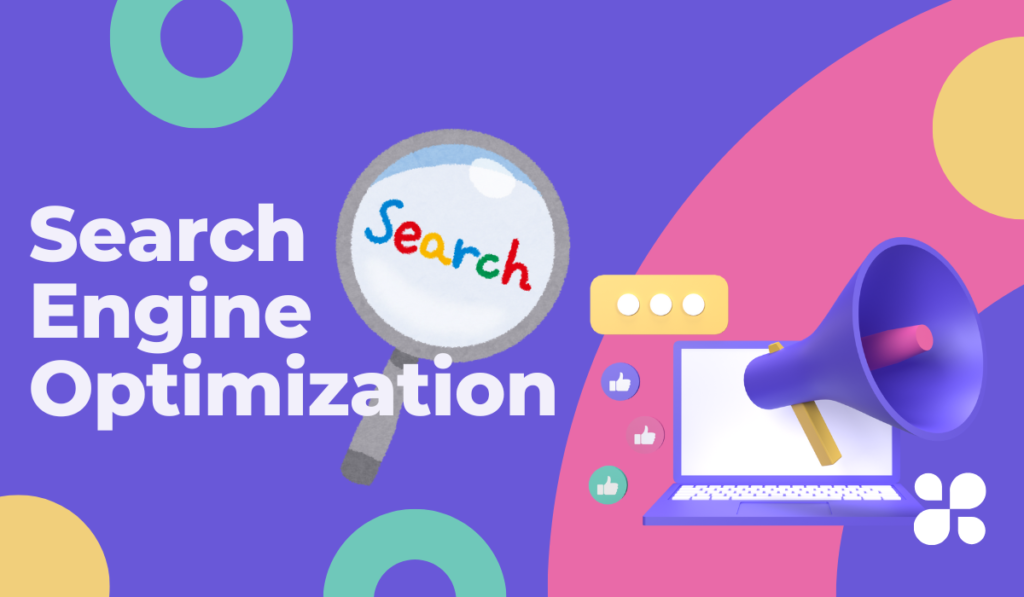Search engine optimization (SEO) techniques play an extraordinary role in ensuring that a website is optimized for search engines & users. It focuses on the behind-the-scenes elements of your website that affect its performance & ranking.
Technical SEO refers to the process of optimizing a website’s infrastructure so that search engines can perfectly crawl, index, and rank its pages. This ensures that your website is technically secure, fast, mobile & user-friendly.
This aspect of Search Engine Optimization (SEO) deals with the non-content elements of your website, such as:
- Page speed and load time.
- Mobile responsiveness.
- Security features like HTTPS.
- Proper URL structure.
- XML sitemaps and robots.txt files.
- Elimination of duplicate content.
In simple ways, technical SEO helps search engines understand your website better, improving its chances of ranking higher. In 2025, the increasing complexity of algorithms makes technical SEO more important than ever.
Why is Technical SEO Important?
SEO techniques are important because they ensure that your website is optimized for search engines and users. It improves crawlability and helps search engines find and index pages more efficiently. A fast-loading, mobile-friendly site improves the user experience and boosts your rankings.
Technical SEO can also help with issues like broken links, duplicate content, and more. and incorrect redirects This ensures smooth website performance. Secure your website with HTTPS, protecting user data. and build credibility It also optimizes structured data. Improves search visibility Without technical SEO, even good content can’t rank well. Make it a key part of a successful SEO strategy in 2025.
Core Components of Technical SEO
1. Website Speed Optimization
2. Mobile Friendliness
3. SSL Certificate
4. Structured Data (Schema Markup)
5. XML Sitemaps
6. Robots.txt File
7. Canonical URLs
8. Website Architecture and Navigation
9. Crawl Errors and Website Health
10. Core Web Vitals and User Experience
11. International SEO and Localization
1. Website Speed Optimization
Website speed is an important ranking factor. Slow websites frustrate users and can negatively impact your SEO performance. Optimizing your website’s speed helps ensure that pages load faster. Improve user experience and search engine rankings Here’s how to optimize your speed.
- Image Compression: Reduce image file size without sacrificing quality using tools like TinyPNG or ImageOptim.
- Minify code: Remove unnecessary characters from HTML, CSS, and JavaScript files using tools like Minify or UglifyJS.
- Browser caching: Enable browser caching to store static resources locally. Helps reduce loading times for returning visitors.
- Use a content delivery network (CDN): A CDN stores a copy of your site on servers around the world. Helps speed up loading times for users in different locations…
- Reduce HTTP requests: Reduce the number of requests by including files and using CSS sprites for images.
2. Mobile Friendly
In a mobile-first world Having a mobile-friendly website is important. Google uses a mobile-first index. This means that the mobile version of the site is used primarily for ranking. Mobile-optimized sites ensure a smooth user experience across all devices. Here’s how to ensure mobile-friendliness:
- Responsive Design: Use a responsive web layout that automatically adjusts to different screen sizes. This ensures readability and usability on mobile devices.
- Touch screen optimization: Make buttons and links large enough for users to easily tap on small screens.
- Avoid pop-ups: Pop-ups can be annoying on mobile devices. Therefore, their use should be avoided or reduced to a minimum.
- Mobile compatibility testing: Use a tool like Google’s Mobile-Friendly Test to see if your site is mobile-friendly.
3. SSL Certificate
An SSL (Secure Socket Layer) certificate helps ensure that data sent between a user’s browser and your website is encrypted and secure. Websites without an SSL certificate will display a “not secure” warning, which can lead to trust issues and a higher bounce rate. Here’s why SSL is important:
- Security: SSL encrypts sensitive information such as passwords and credit card numbers.
- Trustworthiness: Websites with SSL have a lock icon in the URL bar, signaling trustworthiness to users.
- SEO Benefits: Google considers SSL a ranking factor. Websites with SSL rank higher than those without.
Example: An SSL-secured website has a URL that begins with “https://” instead of “http://”.
4. Structured Data (Schema Markup)
Structured data, or schema markup, helps search engines better understand your website’s content. Providing additional context Improve the way search engines display your website in search results. This usually uses rich snippets. Here’s how to implement the schema.
- Recipe Plan: Add detailed information such as ingredients, cooking times, and ratings to recipe pages.
- Article schema: Helps articles appear as complete snippets with publication date, author, and images.
- Product schema: Shows product details such as price, availability. and reviews directly in search results
- Usage: You can add schema markup directly to your HTML code or use a plugin like Yoast SEO for WordPress sites.
5. XML Sitemap
An XML sitemap is a file that lists all the important pages on your website. Makes it easy for search engines to find and index It helps ensure that search engines crawl accurate web pages. Even if it is deeply embedded in the site. Here’s how to customize your XML sitemap.
- Structure: Ensure the sitemap is clear and well-structured, listing URLs with priority and change frequency.
- Automatic Updates: Use plugins or tools like Google Search Console to update your sitemap automatically when new content is added.
Example: Your sitemap could include URLs like “https://www.example.com/blog/post-title” to guide search engines directly to key content.
6. Robots.txt File
The robots.txt file tells search engines which pages or parts of your website to crawl or not crawl. This file is necessary for controlling search engines and preventing resources from being wasted on unrelated or duplicate content. Here’s how to use it.
- Block unwanted pages: Prevents search engines from indexing personal pages, such as login or admin pages.
- Allow important pages: Make sure important pages are accessible for crawling.
Example: A typical robots.txt file might include a directive such as “Disallow: /admin/” to prevent search engines from crawling admin information.
7. Canonical URLs
Canonical URLs are used to handle duplicate content issues. If the same content appears on multiple pages, the canonical tag tells search engines which version of the page to index. This helps avoid penalties for duplicate content. Here is how to use Canonical URLs.
- Add Canonical Tag: Insert the rel=”canonical” tag into the HTML header of the secondary content page that points to the main page.
- Avoid duplicate content: Make sure page formats (such as product models or country-specific URLs) don’t harm your SEO.
Example: A product page has a different URL for each field, but uses the same canonical URL to point to the home page.
8. Website Architecture and Navigation
Website architecture refers to the way pages are organized and linked. of your website together Good architecture improves the user experience and helps search engines crawl your website efficiently. Here’s how to increase efficiency.
- Clear hierarchy: Organize pages into categories that have a clear parent-child relationship. For example, blog posts should link from category pages.
- Internal linking: Use relevant internal links to guide users and search engines through your content.
Example: A website might have a top-level menu linking to sections like “Home,” “About Us,” and “Blog,” with clear subpages for specific topics.
9. Crawl Errors and Site Integrity
Crawl errors occur when search engine bots are unable to access certain pages on your website. These glitches can negatively impact your rankings if not fixed. Regularly checking for crawl errors and maintaining a healthy website are key to a successful SEO strategy. Here’s how to manage them.
- Check for crawl errors: Use Google Search Console to identify 404 errors, server issues, and URL issues.
- Fix Broken Links: Redirect or fix broken links to ensure smooth crawling.
Example: Use 301 redirects to direct search engines to the correct URL if the page is moved.
10. Core Web Vitals and User Experience
Core Web Vitals are a set of metrics that Google uses to measure a website’s user experience. These metrics focus on page loading speed, interactivity, and visual stability. Improving these things can have a direct impact on your SEO rankings. Here’s how to upgrade your Core Web Vitals.
- Largest Content Full Paint (LCP): Optimizes loading times by reducing server response times and image sizes.
- First Input Delay (FID): Reduces JavaScript to ensure faster interactions.
- Cumulative Layout Shift (CLS): Ensure that elements like images and buttons don’t shift unexpectedly when the page loads.
Example: A well-optimized site has minimal changes and content loads quickly without disrupting user interaction.
11. International SEO and Localization
International SEO helps experts optimize websites in different languages, regions, or countries. Global reach and higher visibility in international search engines are essential. Here’s how to do it.
- Hreflang tags: Use hreflang tags to specify the language or region that the page targets. It helps search engines serve the correct version to users.
- Local content: Consider cultural differences and local preferences. and create content according to specific areas.
Example: A website may have separate URLs for English in the United States. (example.com/en-us) and English in the UK. (example.com/en-uk), with each URL targeting the appropriate audience.
Each of these elements is essential to a well-rounded technical SEO strategy. This helps improve user experience, performance, and overall search engine rankings.
Conclusion
SEO techniques are the foundation of a strong digital presence. It helps ensure that your website is fast, secure, and optimized for search engines and users. By focusing on key elements like site speed, mobile-friendliness, Structured data and website status You can boost your rankings and provide a smooth user experience.
Visit DigiTechfab for expert insights and practical advice for SEO professionals. Our platform is committed to helping you reach your digital marketing goals with the latest strategies and trends. Start optimizing your website with DigiTechfab today and stay ahead of your online competition!


